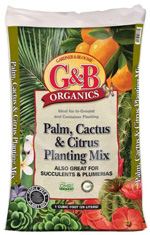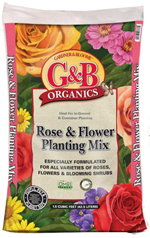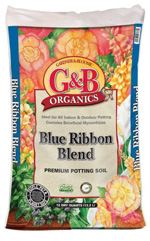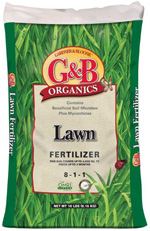|
|
 |
FEATURED QUOTE : "Nature, to be commanded, must be obeyed." ~Francis Bacon |
 |
 |
|
Daylight Saving Time begins at 2 am on Sunday, March 9, 2014, so be sure to set your clocks forward one hour! Your clocks should be set from 2:00 a.m. local standard time, to 3:00 a.m. local daylight time. We remember to change our clocks by the phrase "Spring forward, fall back." As spring begins soon, why not embrace this season of renewal, and replace the batteries in all of your smoke detectors and carbon monoxide detectors. This simple act will help assure the safety of your family; properly working detectors save thousands of lives each year. |
Mon. - Fri.: 7:30 - 5:30
Sat.: 8:00 - 5:30
Sun.: 9:00 - 4:30
 |
|
Planting
Maintenance Duties
|

|
No doubt about it. Blueberries are hot right now! And rightly so--not only are they delicious, they have many, many health benefits as well: 1. They offer the highest amount of antioxidants of any fresh fruit, which means they are excellent disease-fighters and are a prime player in the anti-aging arena. 2. Recent studies suggest that consuming blueberries helps reduce belly fat, body weight and total fat mass; this is very encouraging news for those concerned with cardiovascular health. 3. Blueberries help promote urinary tract health by helping to inhibit the growth of certain bacteria that cause urinary tract infections. 4. Consuming blueberries has been shown to prevent or delay certain age-related eye problems such as macular degeneration, cataract, nearsightedness, farsightedness, dry eye and eye infections. 5. Blueberries contribute to brain health by preventing degeneration and death of neurons; some studies even suggest they are particularly helpful in the treatment of Alzheimer's disease. 6. Their high fiber content, as well as the vitamins and other compounds found in blueberries help improve digestion. 7. Blueberries are an excellent dietary source for preventing cancer, because of their high antioxidant content. 8. Blueberries are considered a great, natural antidepressant--and all without the side effects of prescription drugs! Here's more good news--while blueberry fields were once the domain of those areas with relatively cool summer temperatures, that is no longer the case. Both rabbiteye and southern highbush types of blueberries can be grown in areas that experience high summer temperatures, given the right growing conditions. What conditions do blueberries require? 1. They MUST be grown in an acidic soil.
When planting your blueberries, dig a large hole (the larger, the better) and fill it with pure acid planting mix. As an alternative (many experts consider this the best way to grow blueberries in heavy and/or alkaline soils, as it is easier to control the pH of the soil in a container), plant them in a large container filled with an acid planting mix. When it is time to fertilize your blueberries, feed them with an acidic fertilizer. A pH meter will be helpful in making sure the pH level remains between 4.09 and 5.0. Applications of soil sulphur, as needed, will help to keep the soil acidic. 2. They need ample water, but good drainage.
Dig your hole and fill it with water 2-3 times. If at any point, the water stands in the hole for longer than about 15 minutes, you will need to correct the drainage before planting your blueberry. This can be done by digging a deeper hole or treating the area with gypsum or soil penetrant--ask us for recommendations. 3. Grow your blueberries in full sun, if possible (although they will tolerate part shade, you may not get as good a crop). Visit us soon for more helpful hints about getting your blueberry patch going and for variety recommendations for our area. |
 |
|
All deciduous fruit trees need to be pruned at least once a year for good shape and to bear fruit. The rule of thumb with pruning deciduous fruit trees is to prune while the trees are dormant, after the leaves have fallen to the ground but before new buds have swelled. Each type of fruit tree needs to be pruned differently, so it's important to know which kind of tree you're pruning and how to prune it properly. For example, apples bear their fruit on spurs (short stubby branches growing off main branches) that bear again and again, sometimes for as long as twenty years. If you whack off all the spurs you'll have no fruit. However, peaches and nectarines bear their fruit on one-year-old wood. By pruning them hard, you encourage new growth to replenish fruiting wood. The best shape also differs among types. Apple and pear trees, for instance, do best with a central trunk, with shorter branches at the top, longer ones on the bottom. Peaches and plums do best with an open-center shape (kind of like a bowl). No two trees, even of the same type, can be pruned exactly alike; basic guidelines will apply differently according to the placement of their branches, their age, and their overall vigor. If you're not an expert, follow a pruning manual (one that contains charts) that applies to your climate and type of tree. When you buy a fruit tree, ask us for the best pruning method to use for that tree. Pruning a young tree properly to start with will save you a lot of time and effort later. Trees that branch lower are easier to spray, cover, and pick the fruit from. If you are dealing with a large old tree that has been neglected for some time, keep in mind that it may require several years of pruning to bring it back to where it should be. Your primary goal is to open the tree so that sunlight can penetrate inside of the foliage during the fruiting season and to shorten the taller limbs to bring the fruit production down to a more manageable height. It is safest to call a professional to do the high work and any large branch removal for you. They have the experience and equipment needed. Remember after pruning deciduous fruit trees to clean up the ground under the tree and follow up immediately with dormant spray. |

Step by Step:
|
 click here for a printer friendly version of this page
click here for a printer friendly version of this page |
Written content © 2004-2014 Garden Partners LLC, or respective authors. All Rights Reserved. Privacy Policy. All written content contained in this site is protected by United States copyright law and may not be reproduced, distributed, transmitted, displayed, published, or broadcast without prior written permission of Garden Partners, LLC. You may not alter or remove any trademark, copyright or other notice from copies of the content. Would you like a newsletter like this for your nursery or garden center? Please feel free to look at what we have to offer and contact us for your garden center marketing solutions. |









